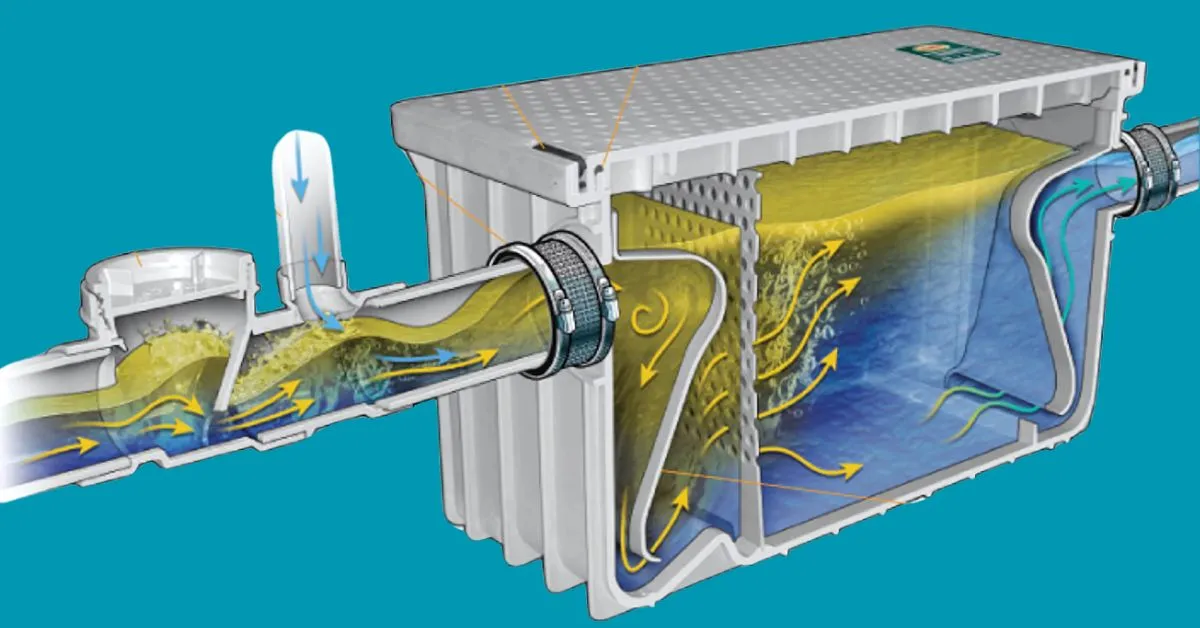Effective wastewater management relies heavily on tools like grease traps that capture fats, oils, and grease (FOG) before they clog pipes or pollute the environment. However, monitoring these traps is not always straightforward. Traditional methods often lack precision and require frequent manual intervention. Enter the Greasewatch Patent—an innovative technology that utilizes ultrasonic sensors to revolutionize grease trap monitoring. This breakthrough enhances accuracy and simplifies maintenance, offering a more creative solution for businesses.
The Importance of Grease Traps in Wastewater Management
Grease traps are essential to any commercial kitchen or industrial operation that deals with large amounts of oil and grease. These traps prevent FOG from entering the wastewater system, where they can cause blockages, damage plumbing, and lead to costly repairs. Additionally, untreated grease can harm local ecosystems and contribute to more significant environmental issues.
To function optimally, grease traps need regular monitoring and maintenance. However, traditional methods of checking grease levels can be unreliable, leading to premature cleanings or unnoticed blockages that cause overflows. This is where new technology offers a solution that changes the game.
Challenges with Traditional Monitoring Methods
Most conventional grease trap monitoring systems rely on capacitance-based probes. These sensors detect grease levels by measuring changes in electrical capacitance as grease builds up. While effective in some cases, capacitance-based sensors are prone to inaccuracies. Factors like temperature fluctuations, grease consistency, and the presence of other contaminants can easily skew results.
The limitations of traditional probes often lead to inaccurate readings, meaning businesses may either schedule unnecessary cleanings or, worse, miss critical maintenance windows. This inefficiency can lead to pipe blockages, system overflows, and costly maintenance repairs—all of which could be avoided with better monitoring.
How Greasewatch Technology Transforms Grease Trap Monitoring
Recognizing the limitations of older systems, Greasewatch introduced a patented technology that uses ultrasonic sensors for grease trap monitoring. Unlike traditional capacitance-based probes, which rely on electrical measurements, ultrasonic sensors measure distance using sound waves.
This innovation is much less affected by external factors like temperature or buildup on the sensor, leading to more accurate and consistent grease level readings. Introducing these self-calibrating ultrasonic sensors offers businesses a more innovative way to manage their grease traps, reducing the risk of under-maintenance and unnecessary cleanings.
How Ultrasonic Sensors Work
Ultrasonic sensors operate by sending high-frequency sound waves into the grease trap. These sound waves bounce off the surface of the grease, and the sensor measures the time it takes for the waves to return. The time delay is then used to calculate the distance between the sensor and the grease surface, providing a highly accurate reading of how complete the trap is.
Because the system relies on sound waves rather than electrical signals, it is far less susceptible to interference from grease buildup, temperature changes, or other environmental factors that can confuse traditional sensors. This makes ultrasonic monitoring a more reliable choice for businesses that want to keep their grease traps in optimal condition.
The Key Benefit: Self-Calibrating Technology
One standout feature of Greasewatch’s ultrasonic sensors is their ability to self-calibrate. Traditional systems often need manual recalibration to account for changes in the grease trap, such as shifting temperatures or varying grease compositions. The self-calibrating technology in the Greasewatch system eliminates the need for manual intervention.
As the environment or grease trap conditions change, the ultrasonic sensors automatically adjust their settings, ensuring continued accuracy without requiring frequent technician visits. This simplifies maintenance and ensures that grease trap performance remains optimal over time.
Advantages Of Traditional Grease Monitoring Methods
Greasewatch’s patented ultrasonic sensor technology offers several advantages that set it apart from older, capacitance-based systems:
Enhanced Accuracy
By using sound waves to measure grease levels, the system provides highly accurate readings. This reduces the risk of false alerts and ensures that grease traps are cleaned only when necessary, leading to more efficient maintenance schedules.
Increased Reliability
It delivers consistent performance because environmental factors like temperature changes or grease buildup less impact the system. Businesses can rely on the readings to be accurate day in and day out.
Lower Maintenance Requirements
The self-calibrating feature drastically reduces the need for manual recalibrations or adjustments. This results in fewer technician visits and lowers overall maintenance costs.
Durability
Designed to withstand harsh industrial environments, Greasewatch’s sensors are built to last. They perform reliably even in harsh conditions, making them an excellent choice for both commercial kitchens and industrial settings.
Regulatory Compliance
Accurate grease trap monitoring is crucial for businesses to comply with environmental regulations. By ensuring that grease traps are maintained at the right time, Greasewatch helps companies to avoid costly fines or legal issues arising from non-compliance.
The Impact on the Grease Trap Monitoring Industry
Introducing ultrasonic sensors through the Greasewatch Patent has significantly raised the bar for grease trap monitoring systems. Traditional monitoring methods are becoming less relevant as businesses seek more efficient and accurate solutions. Greasewatch’s technology provides precision that helps companies to save time, reduce costs, and meet environmental regulations more easily.
With this innovation, companies can manage their grease traps more confidently, knowing the system will alert them when service is genuinely needed. This improves operational efficiency and extends plumbing systems’ lifespan by preventing grease-related blockages and overflows.
Looking to the Future: What’s Next for Greasewatch Technology?
As technology continues to evolve, the potential for further advancements in grease trap monitoring is promising. Greasewatch could expand its technology to integrate with broader building management systems, offering remote monitoring capabilities or automatic maintenance scheduling.
The future may also bring more sophisticated sensors capable of detecting other contaminants or providing more granular data on grease trap conditions. Such advancements would only enhance the efficiency and effectiveness of grease trap systems, making them even more indispensable for businesses in the food service, hospitality, and industrial sectors.
Conclusion
The Greasewatch Patent represents a significant leap forward in grease trap monitoring. Using ultrasonic sensor technology, Greasewatch offers businesses a more reliable, accurate, and low-maintenance way to manage grease traps. This innovation ensures that grease traps are cleaned at the right time and helps companies to comply with environmental regulations, reduce costs, and avoid potential plumbing issues.
With continued advancements on the horizon, Greasewatch is poised to remain at the forefront of grease trap technology, making it an essential tool for industries that rely on efficient wastewater management.
FAQs:
How do ultrasonic sensors in grease traps differ from traditional probes?
Ultrasonic sensors use sound waves to measure grease levels, whereas traditional probes rely on electrical capacitance. This makes ultrasonic sensors more accurate and less prone to environmental error.
What is the advantage of self-calibrating technology in grease traps?
Self-calibrating sensors adjust automatically to changing conditions, such as temperature fluctuations or grease buildup, ensuring consistent and accurate performance without manual recalibration.
How does Greasewatch help businesses stay compliant with environmental regulations?
By providing accurate monitoring, Greasewatch ensures that grease traps are maintained properly, helping businesses avoid blockages and overflows that could lead to regulatory violations and fines.
What industries can benefit from ultrasonic grease trap monitoring?
Industries like food service, hospitality, and any business with commercial kitchens or industrial operations can benefit from ultrasonic monitoring, as it ensures efficient grease management and reduces maintenance costs.
What future advancements can be expected from Greasewatch technology?
Future developments include remote monitoring, integration with broader building systems, and even more advanced sensors for detecting additional contaminants, further improving efficiency and ease of use.

